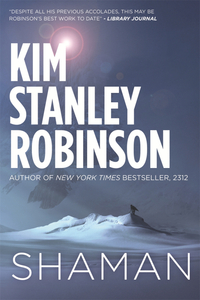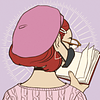Take a photo of a barcode or cover
adventurous
dark
emotional
sad
tense
medium-paced
Plot or Character Driven:
Character
Loveable characters:
Yes
a novel set during hunter gathering times, unique and watching cosmos gives me a new appreciation for our ancestors. they had it tough.
adventurous
reflective
medium-paced
Plot or Character Driven:
Character
Strong character development:
Yes
Loveable characters:
Complicated
An average rating for an average book. It starts strong with the "wander" of its protagonist, a late (Upper) paleolithic adolescent boy named Loon, a right of passage in which the young man must spend a fortnight in the wilderness, literally naked and alone. Upon his return to his clan, the book drops into neutral and never changes gear. I would compare it to driving across Nebraska with cruise control set five miles below the speed limit. Everything is conveyed too dispassionately. The only character I could work up any emotion for was the "old one" (presumably a neanderthal), whose entire vocabulary consists of "roop roop" and "tank oo". The use of modern profanities and lengthy adolescent sexual reveries I found a bit jarring. The setting is a late glacial period in southwestern Europe, possibly at Lascaux, although I could not match the geographical descriptions and rough distances to a contemporary map; I understand that the road signs may have changed somewhat in the last 30,000 years.
I’m really in two minds about this book. It’s obvious that the writing is skilled, in a technical sense. Indeed, it’s difficult to find fault with it. But I felt it was lacking from a story-telling point of view.
First thing’s first, there were some minor irritations that just rubbed be up the wrong way through the whole book. The main character’s name being Loon confused me immediately and wasn’t explained until well into the book. It seemed like a really unlikable name for a character, and I had trouble connecting with him because for most of the early chapters I was wondering if he was mad. I should explain that here in Britain “loon” is short for “lunatic”, whilst in America it is an alternative name for a diver bird, which we don’t use here at all. This was perhaps just unfortunate, but there were other confusing things in the story. Names for animals and objects were sometimes completely made up, with no explanation of what they were, and even Google failing to elucidate the matter – what is an “elg” anyway? Throughout Loon’s solitary wander in the first part of the story, he’s pretty obsessively thinking about sex – not an objection in and of itself, but I just hated the made up words used to stand in for other things – “kolby”, “spurtprong”… Really? It seemed so fatuous and purple prose, I cringed. Loon behaves in a manner that gave me the impression he was in his mid to late teens through the book, but after his wander a character says that he’s twelve, and just a couple of months later he gets married and becomes a father. I know the palaeolithic isn’t the present, but that was pretty squicky to be honest, and it seemed so out of character with his manner and behaviour in the story which seemed older. Another really weird thing is that the author used dashes to indicate dialogue, not quotation marks, which made the difference between dialogue and narrative actually very confusing consistently throughout the book and was not a good technical choice at all. I was hoping that some of this would be clarified in an author’s note at the end elucidating certain authorial choices and discussing the historical evidence that inspired the story, but there wasn’t one.
So let me turn to the story. I was quite interested and engaged during the first section of the story, where Loon is sent out to wander the wilderness alone as some sort of coming of age rite. There was survival action aplenty, and because he was totally alone and the environs were against him, it made for pretty tense and gripping stuff. However, I felt that it lost steam after that. Loon and his pack go about their lives as normal, and whilst interesting from a background and setting point of view, that doesn’t make a plot. Then Loon Whoa! That’s pretty fast! I had trouble buying into this, it was so sudden. Life continues as normal for a good while after and I’m wondering when the plot will show up. Then Okay, so I was pleased that the plot finally showed up, but I wasn’t exactly excited by it. The chase survival plot is very well-worn in the Stone Age fiction genre. Savage Eden did it, The Uprights did it, and much more high profile films Quest for Fire and 10,000 BC did it. I could have got on board with it, if I cared about the characters. But I didn’t. The secondary characters felt barely sketched to me, and as for Loon, I just had no sense of his struggles and his fears, his hopes and dreams, his relatable thoughts, to feel close to him in any way. I just didn’t feel compelled to root for him. I felt disappointingly detached the whole way through.
And that pretty much sums up my thoughts on the book. It wasn’t that it was bad – although there were a couple of irritating niggles – I just felt disengaged because there didn’t seem to be much of a plot for long stretches, and when it did show up it was a trope and one in which I had no real incentive to care about the characters. I just felt disconnected from most of the book.
5 out of 10.
First thing’s first, there were some minor irritations that just rubbed be up the wrong way through the whole book. The main character’s name being Loon confused me immediately and wasn’t explained until well into the book. It seemed like a really unlikable name for a character, and I had trouble connecting with him because for most of the early chapters I was wondering if he was mad. I should explain that here in Britain “loon” is short for “lunatic”, whilst in America it is an alternative name for a diver bird, which we don’t use here at all. This was perhaps just unfortunate, but there were other confusing things in the story. Names for animals and objects were sometimes completely made up, with no explanation of what they were, and even Google failing to elucidate the matter – what is an “elg” anyway? Throughout Loon’s solitary wander in the first part of the story, he’s pretty obsessively thinking about sex – not an objection in and of itself, but I just hated the made up words used to stand in for other things – “kolby”, “spurtprong”… Really? It seemed so fatuous and purple prose, I cringed. Loon behaves in a manner that gave me the impression he was in his mid to late teens through the book, but after his wander a character says that he’s twelve, and just a couple of months later he gets married and becomes a father. I know the palaeolithic isn’t the present, but that was pretty squicky to be honest, and it seemed so out of character with his manner and behaviour in the story which seemed older. Another really weird thing is that the author used dashes to indicate dialogue, not quotation marks, which made the difference between dialogue and narrative actually very confusing consistently throughout the book and was not a good technical choice at all. I was hoping that some of this would be clarified in an author’s note at the end elucidating certain authorial choices and discussing the historical evidence that inspired the story, but there wasn’t one.
So let me turn to the story. I was quite interested and engaged during the first section of the story, where Loon is sent out to wander the wilderness alone as some sort of coming of age rite. There was survival action aplenty, and because he was totally alone and the environs were against him, it made for pretty tense and gripping stuff. However, I felt that it lost steam after that. Loon and his pack go about their lives as normal, and whilst interesting from a background and setting point of view, that doesn’t make a plot. Then Loon
Spoiler
goes to a summer meeting and pretty much marries Elga straight away after meeting her.Spoiler
Elga is stolen by a tribe to the north, and Loon and his friends must rescue her and escape.And that pretty much sums up my thoughts on the book. It wasn’t that it was bad – although there were a couple of irritating niggles – I just felt disengaged because there didn’t seem to be much of a plot for long stretches, and when it did show up it was a trope and one in which I had no real incentive to care about the characters. I just felt disconnected from most of the book.
5 out of 10.
adventurous
medium-paced
Plot or Character Driven:
A mix
Strong character development:
No
Loveable characters:
Yes
Diverse cast of characters:
No
Flaws of characters a main focus:
No
Super interesting, but bits of it dragged. Props to the author for such an incredibly well-researched and imagined story!
slow-paced
Plot or Character Driven:
Character
Strong character development:
N/A
Loveable characters:
No
Diverse cast of characters:
No
Flaws of characters a main focus:
Yes
adventurous
challenging
emotional
hopeful
informative
inspiring
mysterious
reflective
medium-paced
Plot or Character Driven:
Character
Strong character development:
Yes
Loveable characters:
Yes
Diverse cast of characters:
Complicated
Flaws of characters a main focus:
Yes
My favorite Kim Stanley Robinson book since the Red Mars trilogy. Somewhat reminiscent of the first few Clan of the Cave Bear novels, but told from the male perspective. Robinson’s lush descriptions bring the prehistoric clans to life. The writing about the main character’s developing sense of self and purpose as he comes of age is woven through the descriptions of hunting forays, the learning of stories told around the fire and passed from generation to generation to keep the knowledge of the clan alive, the vivid details of the physical effects of living at a time when survival required an understanding of nature’s cycles. This reader is particularly impressed with the detailed explanations of the cave paintings, from the materials used, to techniques for showing a sense of movement in the still paintings, to the effects of the different types of illumination on the resulting paintings, to how they were used to capture stories that were important to the clans, to how the drawing and painting was able to capture experiences and emotions that the artist could not express in words, and the main character’s joy and absorption in the artistic process.
Graphic: Sexual content
Moderate: Animal death, Violence, Trafficking, Kidnapping, Grief
Minor: Emotional abuse, Excrement
adventurous
emotional
inspiring
reflective
slow-paced
Plot or Character Driven:
A mix
Strong character development:
Yes
Loveable characters:
Yes
Diverse cast of characters:
Yes
Flaws of characters a main focus:
Complicated
In bed oak ridge


